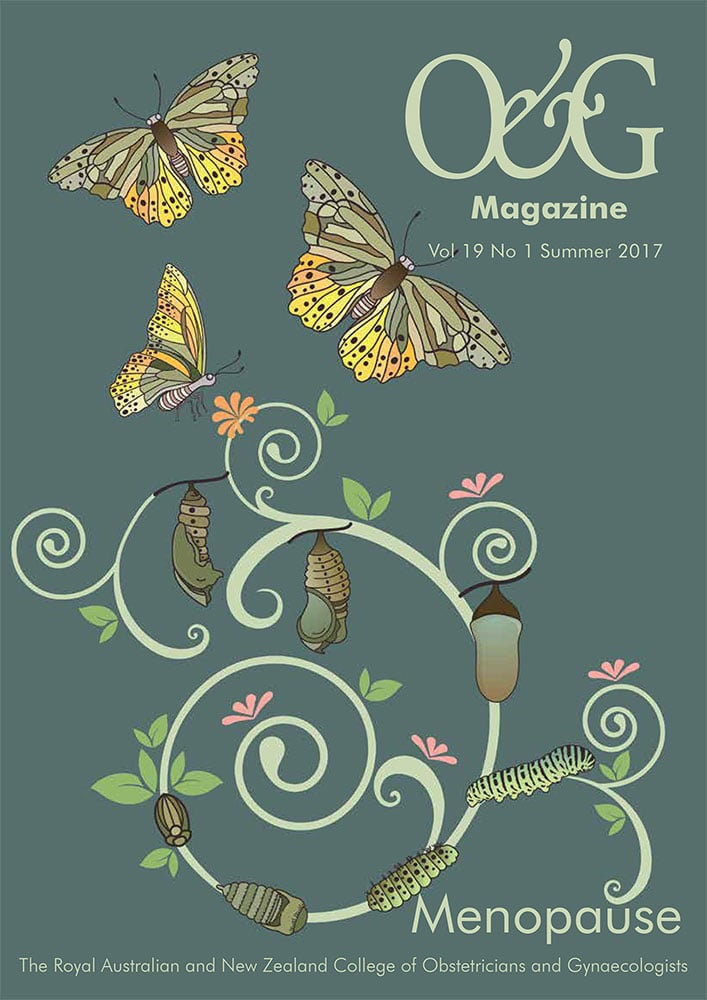We are all going to age and soften and mellow and transition. All of us. If we are lucky. There are plenty of things to be anti about: anti-discrimination, anti-drug, anti-oppression, anti-poverty and anti-sickness. Age isn’t one of them. We need to become pro-aging and embrace the opportunities that aging provides.’
– Jamie Lee Curtis (actress)
Oestrogen should be the fountain of youth. It engulfs us as a powerful waterfall when we develop through our teens. We ride its temperamental waves through our 20s and sail its tranquil seas in our 30s. In our 40s, we hit the rapids trying desperately to stay afloat until the fountain suddenly dries up to a pitiful puddle barely able to quench our thirst. As Phyllis Diller so aptly put it: ‘Maybe it’s true that life begins at fifty… but everything else starts to wear out, fall out or spread out.’
The lack of oestrogenic support beyond the menopause produces a number of troublesome symptoms involving the vulva, vagina and bladder. The International Society for the Study of Women’s Sexual Health (ISSWSH) and the North American Menopause Society (NAMS) Boards formally approved the term genitourinary syndrome of menopause (GSM) as a replacement for the older term vulvovaginal atrophy (VVA) in 2014.1
Anatomy and biochemistry
Embryologically, the uterus, cervix and upper third of the vagina develop from the mesoderm. The endoderm gives rise to the urogenital sinus, forming the lower two-thirds of the vagina and urethra as well as the bladder trigone. The remainder of the urinary bladder develops from the distal ends of the Wolffian ducts.2 A higher concentration of oestrogen receptors (ER) is present in tissues arising from the endoderm rather than the mesoderm, making these structures far more sensitive to the hormone. ERα are localised in the urethral sphincter, while the urinary bladder is populated by ERβ. Both receptors are present in the premenopausal vaginal epithelium; the postmenopausal vaginal epithelium lacks ERβ.3
Oestrogen increases glycogen storage in the vaginal epithelial cells, providing a substrate for lactic acid production, which subsequently promotes the growth of lactobacilli. The interplay between hormone and bacteria ensures an acidic vaginal pH of 3.5 to 4.5, providing a natural protection against vaginitis and urinary tract infections (UTIs). Oestrogen increases blood flow in the vaginal walls during sexual arousal, resulting in congestion and lubrication. It also controls collagen synthesis and breakdown within the vaginal walls.4
Oestrogenic effects on the urethra include an increase in the muscular tone of the urethral sphincter and an increase in the peri-urethral resistance. Oestrogen maintains the sensory threshold of the bladder and promotes relaxation of the detrusor muscle during the filling phase.3
Symptoms and signs of GSM
GSM typically develops five to six years after the menopause and affects at least 50 per cent of postmenopausal women. Symptoms are under-reported and therefore the true incidence of GSM is under-appreciated.5
The lack of oestrogen in the vaginal mucosa causes a reduction in collagen formation and regeneration. Blood flow is reduced and a shift in the vaginal maturation index occurs. This leads to a decrease in glycogen-rich epithelial cells, loss of lactobacilli and a subsequent rise in vaginal pH to between 6 and 7. Symptoms may include dryness; itching; vaginal discharge; decreased elasticity; abnormal vaginal bleeding; loss of rugae; thinning of the vaginal walls; petechiae and ulcerations.5 6
The labia and vulva lose their fullness; the introitus narrows; mucosal surfaces are inflamed and phimosis of the clitoris occurs. It is essential to differentiate these external characteristics from other vulval dermatoses such as lichen sclerosus, lichen planus and lichen simplex chronicus. These should be treated in the first instance, prior to commencing topical therapies for GSM.5
The lack of oestrogen in the postmenopausal bladder decreases detrusor contractility, with a higher rate of voiding dysfunction and an increase in residual urine volumes. This can lead to symptoms of an overactive bladder, including frequency, urgency and nocturia. Furthermore, the mechanical clearance of pathogens from the bladder and urethra is compromised and, together with the rise in vaginal pH, it leads to an increased risk of UTIs in the postmenopausal woman.3
Sexual activity often declines with age, due to male or female factors, or both. A US study found that sexual dysfunction occurs four times more commonly in women who suffer from GSM compared to those who don’t. The CLOSER study, a large international survey, showed that up to 27 per cent of women are concerned about vaginal discomfort ruining their future sex lives. Menopause-associated psychosexual complaints may include decreased sexual desire/arousal/orgasm/frequency of intercourse; dyspareunia; post-coital bleeding; lower self-esteem; negative impact on relationships and an increased risk of sexually transmitted infections due to the friable, atrophic mucosa. These concerns should be addressed in a timely fashion when they arise, to prevent decreased sexual function from becoming sexual dysfunction.5 6
It is essential to recognise that GSM is a diagnosis of exclusion. ‘Red flag’ symptoms, such as vaginal bleeding or discharge, should be investigated appropriately to rule out more sinister conditions.
Management of GSM
Topical oestrogens form the mainstay of treatment for GSM. Types of oestrogen preparations differ widely, including creams, pessaries and rings. When assessed at a minimum of 12 weeks, topical oestrogens compared to placebo showed fewer symptoms of vaginal atrophy, an increase in vaginal maturation index and lower pH values. These results were consistent across all types of oestrogen preparations. Adverse events occurred at similar rates, but were rare in both oestrogen replacement and placebo groups. Topical oestrogen replacement is more likely to improve symptoms of urinary incontinence as compared to systemic menopausal hormone therapy (MHT). Systemic MHT is not advocated primarily for the treatment of GSM but may offer relief of symptoms even when taken for indications such as vasomotor symptoms.7 8
Adverse effects of topical oestrogen
Systemic absorption of vaginal oestrogen remains a major concern for healthcare professionals and patients alike. During the loading period (treatment nightly for two weeks) there is an increase in measured serum oestrogen levels. These levels decrease to the usual postmenopausal levels (less than 20pg/mL) once the maintenance dose is commenced, largely due to thickening of the vaginal mucosa that results in lower transvaginal absorption. Progesterone supplementation is not recommended for endometrial protection with the use of vaginal oestrogen preparations.7 8
Non-hormonal management options
Gels may lower the pH of the vagina and show a greater reduction in dyspareunia when compared to placebo. They may reduce the incidence of bacterial infections and bacterial vaginosis. Many different preparations are available for over-the-counter purchase.6
Water/oil/silicone-based lubricants can be used intermittently during sexual intercourse to moisten the vagina and reduce dyspareunia. They do not treat the underlying cause of symptoms and may cause irritation in some women. They may increase the incidence of thrush.6
Vaginal moisturisers are recommended for continuous rather than periodic use. Replens is a vaginal moisturiser that has been compared to vaginal oestrogens.9 They have similar efficacies in reducing symptoms of itching, irritation and dyspareunia, but objectively, Replens® does not alter the vaginal maturation index and has no effect on associated bladder symptoms.
The future
Newer medications for GSM include selective oestrogen receptor modulators (SERMs) such as ospemifene. Ospemifene has shown efficacy, however carries an increased risk of VTE, similar to other SERMs. Vaginal dehydroepiandrosterone (DHEA) improves vaginal dryness, dyspareunia and irritation/itching; seemingly without a stimulatory effect on the endometrium. Tibolone is a synthetic steroid with oestrogenic and androgenic properties. It improves sexual function, vaginal maturation index and blood flow. Tibolone may also improve symptoms of nocturia and urinary urgency. Topical testosterone offers significant relief of dyspareunia and dryness in a small group of women on aromatase inhibitors for treatment of breast cancer.5 6
Vaginal laser treatment is becoming increasingly popular as a treatment option of GSM. A small, prospective pilot study compared 45 women undergoing laser treatment to a group of 19 women who had conventional oestrogen replacement therapy. Outcomes between the two groups were comparable at intervals measured during treatment.10 The oestrogen group showed a reduction in efficacy at six months (treatment lasted for three months only) as expected when the treatment is discontinued. The literature on this subject is growing, but caution should be exercised as we await large prospective, comparative studies and long-term follow-up data.
Conclusion
The increase in life expectancy in the western world means that women spend a third of their lives in the hypo-oestrogenic period beyond the menopause.3 In the 21st century, GSM will inevitably become an increasing concern to women and their partners. Although often considered minor or unimportant, GSM is the cause of much distress and misery, with markedly adverse effects on a woman’s quality of life. It deserves serious attention from health professionals and researchers alike.
References
- Portman DJ, Gass MLS on behalf of the Vulvovaginal Atrophy Terminology Consensus Conference Panel. Genitourinary syndrome of menopause: new terminology for vulvovaginal atrophy from the ISSWSH and NAMS. Maturitas. 2014;79:349-354.
- Moore KL, Persaud TVN. The developing human. Clinically Oriented Embryology. 6th Edition. WB Saunders, Philadelphia, 1998. p303-347.
- Robinson D, Toozs-Hobson P, Cardozo L. The Effect of Hormones on the Lower Urinary Tract. Menopause International. 2013;19(4):155-162.
- Castelo-Branco C, Cancelo MJ, Villero J, Nohales F, Julia MD. Management of postmenopausal vaginal atrophy and atrophic vaginitis. Maturitas. 2005;52(Suppl1):S46-S52.
- Comoney C. Treatment of vaginal atrophy. Women’s Health. 2014;10(2):191-200.
- Palacios S, Castelo-Branco C, Currie H, et al. Update on management of genitourinary syndrome of menopause: A practical guide. Maturitas. 2015;82:307-312.
- Weber MA, Kleijn MH, Langendam M, et al. Local Oestrogen for Pelvic Floor Disorders: A Systematic Review. PLoS ONE. 2015;10(9):e0136265.
- Lethaby A, Ayeleke RO, Roberts H. Local oestrogen for vaginal atrophy in postmenopausal women. Cochrane Database of Systematic Reviews. 2016;(8).
- Sygdeman M, Swahn ML. Replens versus dienoestrol cream in the symptomatic treatment of vaginal atrophy in postmenopausal women. Maturitas. 1996;23:259-263.
- Gambacciani M, Levancini M, Cervigni M. Vaginal erbium laser: the second-generation thermotherapy for the genitourinary syndrome of menopause. Climacteric. 2015;18(5)757-763.







Leave a Reply